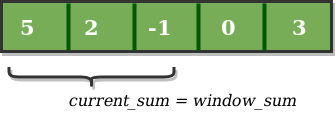

The automobile seat should act as the seatbelt does in a frontal collision, preventing occupant movement in relation to vehicle interior, preventing the occupant from striking objects in the vehicle's interior, and preventing ejection from the vehicle. If the seat yields rearward, a failure of the restraint system can cause occupant ejection from the vehicle. If the seat remains upright, this can send the occupant into the roof of the vehicle as he or she slides up the seat. A combination of the movement rearward of the pelvis and the narrowing of the human body from the hips to the knees can cause the occupant to slide out from under the belt in the event of seat failure.

Due to the usual forward placement of the lap belt, the pelvis of the seat occupant moves rearward and builds up energy before the lap belt locks tight. Seat belts are not always effective though. The shoulder belt can help restrain the upper torso and head and prevent inner-vehicle injury. The main benefit of seat belts in rear crashes is that the lap belt can prevent ejection from the vehicle when the seat-back yields backwards.

Studies have been shown that wearing seat belts can reduce the chance of a fatal injury in a rear crash by as much as 47%. Using safety belts does statistically help prevent injury in rear-end collisions.
SLIDING WINDOW PROTOCOL JAVA PROGRAM DRIVERS
Studies have shown that drivers wearing their seat belts can be consistently ejected through the rear window of many vehicles when rear-ended by a car traveling only 18 miles per hour. The impact forces in a rear-end collision can cause seats to fail, which can result in ejection out the rear window of the vehicle, or collisions with passengers or parts of the car.

Unfortunately, many of today's vehicles do not have proper seats and restraint systems. A properly designed and functioning seat and restraint system would keep the vehicle occupants upright in their seats and protect them from injury. Severe rear-end collisions can result in an acceleration of 20 g's. When a vehicle is hit from behind, energy of the moving vehicle is transferred to the rear-ended vehicle, sending the vehicle forward and the occupants rearward. Seat belts, air bags, heavy-duty front bumpers, and the engine bay protect the vehicle occupants in the event of a frontal impact, but little protection is available for rear-end collisions.įigure 1: SER's Seat-back testing apparatus Automobiles have traditionally been designed to withstand frontal impacts. Many of the automobiles produced today have defective seats and seat components that can result in the vehicle occupants being ejected rearward out of the vehicle. Many of these fatalities are due to failure of the vehicle's restraint system to protect the vehicle occupants from a rear end collision, often at moderate collision speeds. Some studies have found as many as 1300 fatalities annually occurring due to rear-end collisions, and many more are seriously injured.
SLIDING WINDOW PROTOCOL JAVA PROGRAM DRIVER
Rear-end collisions are usually caused by driver inattentiveness. Two and a half million rear-end collisions occur every year.


 0 kommentar(er)
0 kommentar(er)
